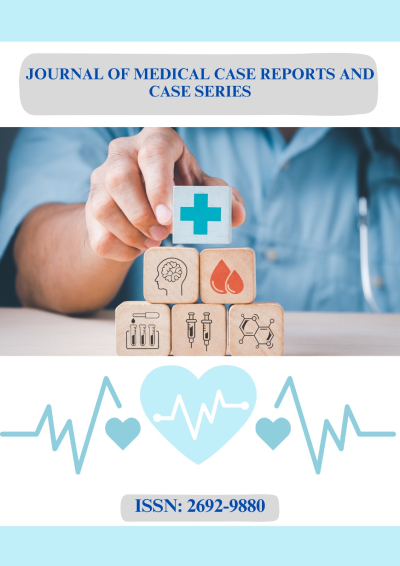Yahya Fayaz1*, Shahab Uddin Ahmadi1, Ali Naqi Karimi2, Ismail Yaqubi2
1Department of Stomatology, Khatam AL Nabieen University, Kabul, Afghanistan.
2Department of Oral & Maxillofacial Surgery, National Curative and Specialized Stomatology Hospital, Kabul, Afghanistan.
*Corresponding Author: Yahya Fayaz, Department of Stomatology, Khatam AL Nabieen University, Kabul, Afghanistan. https://orcid.org/0009- 0009-8517-4002.
Dear Editor,
I would like to commend Nayab et al. for their insightful research on "The Prevalence of Dental Caries in 1st Permanent Molar Teeth Among Teenage Boys and Girls at FMIC Hospital, Kabul, Afghanistan [1]." This study addresses an important public health issue, shedding light on the burden of dental caries among teenagers in Afghanistan. However, I would like to draw attention to several methodological and contextual aspects that may enhance the study's generalizability and scientific impact in future research.
Firstly, the study's observational design conducted in a single hospital setting, while informative, restricts the generalizability of the findings to a broader Afghan population. Dental caries prevalence may vary across different regions, socio-economic strata, and demographic factors. Therefore, a multi-center study incorporating various geographic regions would offer a more comprehensive perspective on the prevalence of dental caries, better reflecting the socio-cultural diversity within Afghanistan. A stratified sampling approach [2] could improve the representativeness of such research.
Additionally, the study does not account for key confounding variables such as socio-economic status, dietary habits, and oral hygiene practices, all of which are well-established determinants of dental caries [3-5]. Excluding these variables limits the explanatory power of the study, as socio-economic factors can significantly influence access to dental care and preventive measures such as fluoride use. Future research should integrate these variables to provide a more comprehensive understanding of the underlying risk factors contributing to dental caries in this population.
The increased prevalence of dental caries among the 13–18 age group, compared to the 7–12 age group, is another important finding that merits further exploration. Adolescence is often associated with changes in dietary habits, oral hygiene practices, and potentially decreased parental supervision. Investigating whether these behavioral factors contribute to the higher prevalence in the older cohort would provide valuable insights for designing targeted interventions aimed at younger age groups to curb the progression of dental caries [6-8].
While the study concludes there is no significant gender disparity in caries prevalence, the slightly higher rate among girls (52% vs. 48%) might suggest that gender-specific behaviors or health-seeking patterns may influence these outcomes. A more detailed analysis of gender-related differences, potentially involving socio-cultural and behavioral factors, may help explain these subtle variations.
Moreover, the absence of a discussion on fluoride exposure strategies represents a missed opportunity. Fluoride’s role in caries prevention is well-documented [9, 10], and given that Afghanistan does not practice water fluoridation, the study may have explored alternative fluoride-based interventions such as toothpaste, gels, or varnishes. Incorporating fluoride into public health strategies may substantially reduce the burden of dental caries, especially in resource-limited settings.
Finally, while the study mentions a knowledge improvement program targeting teenagers and their families, it does not provide sufficient details on the content or effectiveness of these educational efforts. Future studies would benefit from a more structured evaluation of such interventions, including follow-up assessments to gauge changes in oral hygiene behaviors and their impact on caries prevention.
In conclusion, while this study provides valuable data on the prevalence of dental caries among Afghan teenagers, addressing the limitations outlined above in future research may significantly enhance the comprehensiveness of the findings. I commend the authors for their important contribution and look forward to further studies that will build upon this work to advance oral health outcomes in Afghanistan.
Ethical Approval: Not applicable
Disclosure Statement: The authors report no conflict of interest.
References
- Nayab H, Shinwari N, Alikozai N, Sekandari A, Sahebi S (2024) The Prevalence Of Dental Caries In 1st Permanent Molar Teeth Among Teenage Boys And Girls At FMIC Hospital, Kabul, Afghanistan: An Observational Study. J Comm Med and Pub Health Rep. 5(07).
- Qualtrics. Stratified Random Sampling. 2024.
- Jagadheeswari Ramamoorthy, Mahalakshmi J (2022) Correlation of Socioeconomic Status and Dental Caries. J Res Med Dent Sci. 10(6): 161-7.
- Costa SM, Martins CC, Bonfim MdLC, Zina LG, Paiva SM, et al. (2012) A systematic review of socioeconomic indicators and dental caries in adults. International journal of environmental research and public health. 9(10): 3540-74.
- Aslan Ceylan J, Aslan Y, Ozcelik AO (2022) The effects of socioeconomic status, oral and dental health practices, and nutritional status on dental health in 12-year-old school children. Egyptian Pediatric Association Gazette. 70(1): 13.
- Reddy P, Krithikadatta J, Srinivasan V, Raghu S, Velumurugan N (2020) Dental Caries Profile and Associated Risk Factors Among Adolescent School Children in an Urban South-Indian City. Oral Health & Preventive Dentistry. 18(2): 379-386.
- Davis M (2014) Association Between Dental Caries and Socioeconomic Status Among One to Five-Year-Old Native American Children.
- Chakravathy P, Chenna D, Chenna V (2012) Association of anthropometric measures and dental caries among a group of adolescent cadets of Udupi district, South India. European Archives of Paediatric Dentistry. 13(5): 256-60.
- Weyant RJ, Tracy SL, Anselmo TT, Beltrán-Aguilar ED, Donly KJ, et al. (2013) Topical fluoride for caries prevention: executive summary of the updated clinical recommendations and supporting systematic review. J Am Dent Assoc. 144(11): 1279-91.
- EUROPA. What role does fluoride play in preventing tooth decay?. 2024.



